

 The other day we had a very nice wine for dinner. I had to taste it blind, of course. It was immediately obvious that it had quite a few years in the cellar. The colour was brick-red-brown. The fruit was very ripe with hints of raisins. Tobacco and cedar wood was definitely there. The finish was quite tannic and my guesses leaned towards a Médoc of 10 to 15 years of age. I was quite sure that that was it, and that is something that is best avoided in blind tastings. It was hard to swallow that I was totally wrong but I was, of course. It was a Languedoc wine. A Château Pech-Redon, La Centaurée 1999. We had bought it at the vineyard in 2001 for a modest 80 Fr (now some 12 euro). A steal. A brilliant price for a brilliant wine. And for a change we had bought a full 6-pack case. Sometimes when we have finished a good bottle of wine we say “we didn’t we buy a case?” This time we didn’t need to. (On the other hand, if we had bought a case of each wine we have we would need a bigger cellar!)
The other day we had a very nice wine for dinner. I had to taste it blind, of course. It was immediately obvious that it had quite a few years in the cellar. The colour was brick-red-brown. The fruit was very ripe with hints of raisins. Tobacco and cedar wood was definitely there. The finish was quite tannic and my guesses leaned towards a Médoc of 10 to 15 years of age. I was quite sure that that was it, and that is something that is best avoided in blind tastings. It was hard to swallow that I was totally wrong but I was, of course. It was a Languedoc wine. A Château Pech-Redon, La Centaurée 1999. We had bought it at the vineyard in 2001 for a modest 80 Fr (now some 12 euro). A steal. A brilliant price for a brilliant wine. And for a change we had bought a full 6-pack case. Sometimes when we have finished a good bottle of wine we say “we didn’t we buy a case?” This time we didn’t need to. (On the other hand, if we had bought a case of each wine we have we would need a bigger cellar!)
Tasting blind is difficult. Anyone who has tried can tell you. When it is wines that have a bit of bottle age it is all the more difficult. With young wines at least you have a fair chance. The varietal character is more present; the different components are more separate. The more the components melt together and the wine ages the more difficult it becomes. But that’s okay. I’d rather have a delicious and balanced wine and guess totally wrong than the other way around!
We have just come back home from our long wine tour to Argentina and Chile. Two weeks of fantastic experiences, lots of delicious wines and good food. Chile and Argentina are neighbouring countries that from here, at a long distance, may look quite similar. But when you are there they are decidedly different! Both in terms of culture and people as well as for wine. But one thing they have in common is a fantastic entrepreneurial spirit among the winemakers and that you can find some delicious wines there today. There are already a few photographs from the trip on BKWine Tours’ Facebook page (taken by a traveller). In time we will have more texts, photos and videos on our wine travel blog.
Only just back from South America we went to the food and wine books’ version of the Academy Awards, the Gourmand World Cookbook Awards. We were glad we were back in time, so that we could be there to hear that we had won second prize in the category “educational books on wine”! Read more on that further down.
Britt & Per
PS: Recommend to your friends to read the Brief!
What’s on at BKWine Tours
- South Africa, 1-11 March
- Bordeaux, 22-26 May
- Bordeaux, 18-22 September
- Douro Valley, Portugal, 23-27 October
For more information please contact us on email or on phone (we’re on French time), or go to our wine travel site on www.bkwinetours.com!
We also make custom designed wine tours – on-demand tours for you and a group of friends, for your company (maybe to scout new winegrowers?), for a special event… We can combine winery visits and wine touring with other activities: gastronomic workshops, visit to an oyster farm, truffles hunting, cheese making, and more. More info on the custom designed and bespoke BKWine wine tours and travel here!
Wine tours in Finnish: We also do wine tours in Finnish. And in German, Norwegian, Spanish…
Do you want the latest news and updates on our wine travel activity? Subscribe here! (Second alternative BKWineTours.com)
From the World of Wine
Verona threatens Valpolicella?
 Verona is spreading and it is time to stop the urbanization, says Count Pieralvise Serego Alighieri and other wine producers and environmentalists in Valpolicella, one of Italy’s most famous wine regions.
Verona is spreading and it is time to stop the urbanization, says Count Pieralvise Serego Alighieri and other wine producers and environmentalists in Valpolicella, one of Italy’s most famous wine regions.
Valpolicella is still a beautiful wine region with gentle hills behind which you find the city of Verona. But for how long, asks Alighieri, if we continue to build as we have done for the last 25 years?
Alighieri is a descendant of the famous Dante Alighieri, who moved to Verona in 1301 after being banned from his hometown of Florence. The family has since been active in agriculture and viticulture in the Valpolicella. Read more in Drinks Business.
It’s not just Valpolicella that have large towns looming close to their doorstep. Just look at Chateau Haut-Brion and Château La Mission Haut-Brion in the Graves. They are today located in the suburbs of Bordeaux. You can even go there with the tram. But being such prestigious chateaux they can probably rest assured. No one is going to ask for building permission on their vineyards.
World’s second best book for drinks education: Wine and the environment
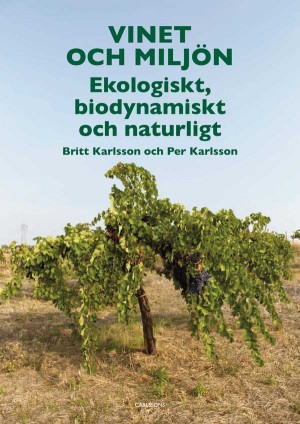 The Gourmand World Cookbook Awards is the Academy Awards (Oscar ceremony) for food and drinks book. Both happened on the same weekend recently. The GWCA is perhaps not quite as star studded as the AA but the ceremony at the Louvre in Paris was quite impressive.
The Gourmand World Cookbook Awards is the Academy Awards (Oscar ceremony) for food and drinks book. Both happened on the same weekend recently. The GWCA is perhaps not quite as star studded as the AA but the ceremony at the Louvre in Paris was quite impressive.
We are very proud to say that our latest book, Wine and the Environment, won second prize in the category “Wine and drinks books; drinks education”. In other words, the second best book in the worlds for wine education!
The motivation of the jury was this: “The wine world ferments with new and old philosophies and bold ideas. With great ambition and in detail Britt and Per Karlsson guides both the professional and the wine enthusiast to organic, biodynamic and natural wines”.
Our previous book, The Creation of a Wine, won first prize in 2010 in the category “world’s best wine book for professionals”. One first place and one second… we are very proud.[divider_flat] 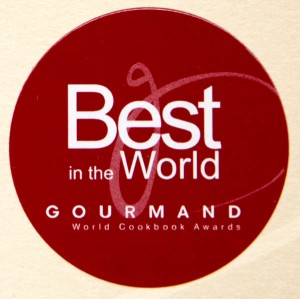
-[divider_flat]
Åsa’s Wine of the Month: Pietradolce, Archineri, Etna Rosso DOC, 2010
On the slopes of Etna you can find a small vineyard, 10 hectares, called Pietradolce. The old vines, between 40 and 80 years old, grow in the black volcanic soil. They produce small yields but of high quality. The grape variety is nerello mascalese, typical for Etna. It gives red wines of light colour but with lots of tannins.
At Pietradolce they started making wines in 2005 so their history is not long. But in this short time they have produced some excellent results. The Archineri Etna Rosso DOC from Pietradolce is made from 100% nerello mascalese and has a lovely bouquet of dark berries, rosemary and juniper. In the mouth it has a good structure, a lot of tannins, and is very elegant. Archineri is without a doubt one of the best wines I have had in a long time. (And that’s quite a few!)
Pietradolce, Archineri, Etna Rosso Doc, 2010, www.pietradolce.it, price ca 22 euro
Faulty is not natural, says Michel Chapoutier
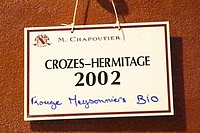 Chapoutier in the Rhone Valley was first among the larger producers in France to go organic and biodynamic. Now the head of the firm, Michel Chapoutier, is disturbed by the fact that some wines that call themselves natural are simply defective. Their volatile acidity is too high and they are infected with Brettanomyces.
Chapoutier in the Rhone Valley was first among the larger producers in France to go organic and biodynamic. Now the head of the firm, Michel Chapoutier, is disturbed by the fact that some wines that call themselves natural are simply defective. Their volatile acidity is too high and they are infected with Brettanomyces.
This is not a taste of terroir he says, instead it is a sign of poor winemaking. These wines should not be allowed appellation status, he believes, because an AOC wine must be typical for the region och show the region’s character. These wines all taste the same, he thinks, whether they come from Bordeaux, Rhone or from somewhere else.
Michel Chapoutier says to Drinks Business that he does not think it is wrong to use sulphur in the right proportions.
Brettanomyces is a yeast that produces a somewhat “rural” smell to the wine which can sometimes be acceptable and even pleasant, but sometimes not. Brett, as it is often called, can be monitored with sulphur. High volatile acidity is often due to strong exposure to oxygen which brings acetic acid. This can also be avoided by adding some sulphur.
There is some truth in it what Michel Chapoutier says. We have also noticed that wines without sulphur lose the character of their origin. This does not mean that they are always faulty. But they are harder to recognize in a blind tasting.
German riesling, chardonnay, sauvignon blanc and perhaps zinfandel (?) from Weingut Kunstler
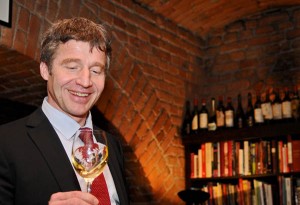 Weingut Kunstler in the Rheingau in Germany is a winery with roots back to the 17th centuray. But it is also a wine producer that is ferociously modern. Gunter Kunstler, the current head, makes outstanding rieslings and also exciting wines from chardonnay, sauvignon blanc and pinot noir.
Weingut Kunstler in the Rheingau in Germany is a winery with roots back to the 17th centuray. But it is also a wine producer that is ferociously modern. Gunter Kunstler, the current head, makes outstanding rieslings and also exciting wines from chardonnay, sauvignon blanc and pinot noir.
At a recent tasting that BKWine reporter Ulf Bengtsson attended he was asked if he would be making wine from zinfandel too. Guess what he answered!
Read more: Gunter Künstler of Weingut Künstler shares his thoughts on wine.[divider_flat]
A super-Tuscan wine tour lunch at the prestigious Antinori winery Tenuta di Biserno
 Tenuta di Biserno is in the Maremma region on the Tuscany coast. The owner is Lodovico Antinori who used to own well known Ornellaia.
Tenuta di Biserno is in the Maremma region on the Tuscany coast. The owner is Lodovico Antinori who used to own well known Ornellaia.
To get there you need to navigate some winding roads but you are awarded with beautiful nature and great wines made by Swedish born wine maker Helena Lindberg. We came there in September and we have a delicious lunch.
Read more on the wine travel blog: Wine, food and grappa at Tenuta di Biserno in Tuscany.[divider_flat]
Britt’s Wine of the Month: Terrasses du Larzac 2011, Mollard & Fillon, Languedoc
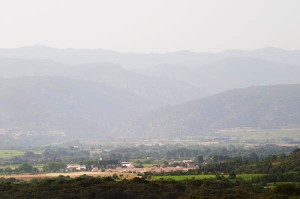 Packed with dark berries, quite soft and easy-to-drink but with good structure and freshness and a spicy aftertaste that reminds me of the Syrah grape. And Syrah is one of the grapes, the others are grenache, cinsault and carignan.
Packed with dark berries, quite soft and easy-to-drink but with good structure and freshness and a spicy aftertaste that reminds me of the Syrah grape. And Syrah is one of the grapes, the others are grenache, cinsault and carignan.
Mollard & Fillon is a new small wine company run by Nicolas Mollard and Sébastien Fillon. Sébastien also run the small high-class vineyard Le Clos du Serres.
For this Terrasses du Larzac, says Nicolas, they look for good vineyards in the area, buying up grapes from growers who work well and thoroughly. Their aim is to produce a pleasant wine with elegance and freshness. And the superb terroir of Terrasses du Larzac helps, says Nicolas.
Terrasses du Larzac is located northwest of Montpellier and is considered today as being a very interesting part of Languedoc. The mountains are near, Mont Baudile reaches 850 meters. Cool nights allow the grapes to ripen slowly, thus we get more complex flavors, says Nicolas. Approximate price 14 euro.
The pride of Austria, gruner veltliner, threatened?
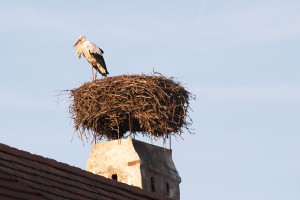 Grüner veltliner is the great Austrian grape that has become for Austria what riesling is for Germany, malbec for Argentina and carmenère for Chile.
Grüner veltliner is the great Austrian grape that has become for Austria what riesling is for Germany, malbec for Argentina and carmenère for Chile.
Now, however, many growers are worried, among them Lenz Moser. The area planted with grüner veltliner has fallen in recent years, from 20 000 hectares to 13 500 hectares today. Instead, black grapes have been planted. However, plantings of grüner veltliner in other countries, mainly in New Zealand and the United States, have increased. Lenz Moser encourages his wine producing colleagues to start planting gruner veltliner again. Otherwise he fears that other countries will take over the market. Read more on Drinks Business.
Wine is subject to fashion and trends as everything else and the red wines from Austria have had a big boost in recent years. So maybe it has been the right thing to plant black grapes. Especially since Austria also has its own, very interesting black grapes, like zweigelt and st. laurent. Moreover, a country may be known for a grape variety even though that variety is not the most planted. Look at Chile, known for its carmenère which accounts for only 8% of the total plantations!
Natural and cultured yeast in the Douro Valley
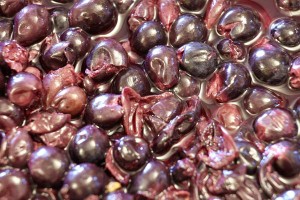 An important decision in the wine cellar is whether to use native or cultured yeast. In the Douro Valley in northern Portugal both types are used but for different wines. Oscar Quevedo from the Quevedo Wines Estate in the Douro explains the difference in the guest article: Using native yeast or selected yeast at Quevedo Wines in the Douro.[divider_flat]
An important decision in the wine cellar is whether to use native or cultured yeast. In the Douro Valley in northern Portugal both types are used but for different wines. Oscar Quevedo from the Quevedo Wines Estate in the Douro explains the difference in the guest article: Using native yeast or selected yeast at Quevedo Wines in the Douro.[divider_flat]
Picpoul de Pinet to have its own AOP
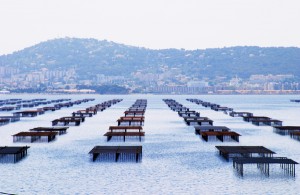 Picpoul de Pinet is doing well. Production has doubled since 1990. We have never really quite understood why this wine from Languedoc has become so popular. Good marketing is certainly one reason. The wine has a good reputation as an unpretentious seafood wine. And now it will soon have its own appellation, AOP Picpoul de Pinet, instead of being a sub-appellation of the Languedoc.
Picpoul de Pinet is doing well. Production has doubled since 1990. We have never really quite understood why this wine from Languedoc has become so popular. Good marketing is certainly one reason. The wine has a good reputation as an unpretentious seafood wine. And now it will soon have its own appellation, AOP Picpoul de Pinet, instead of being a sub-appellation of the Languedoc.
The wine is made in the area near the Bassin de Thau with its large mussel and oyster farms. The new appellation rules are slightly stricter than those applied previously. The yield is lowered from 60 to 55 hectoliters per hectare, the vines must be 4 years instead of 3 before the grapes may be used and planting density for new plantings should be at 4400 vines per hectare.
According Vitisphere the spokesman for the new appellation says that it would be good if the name of the grape piquepoul is renamed. Isn’t that a little excessive? The spelling is already different. The grape is spelled piquepoul and the wine picpoul. The spokesman mentions the prosecco grape in Italy that, at the request of winegrowers in the DOCG Prosecco Valdobbiadene, was renamed Glera. Outside of Picpoul de Pinet the grape piquepoul is not much seen. It is however allowed in Châteauneuf-du-Pape and also planted in California.
Excellent wines and cheese: Sancerre in the Loire Valley
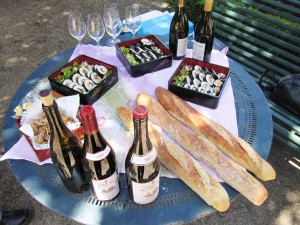 Sancerre in the Upper Loire is famous for its refreshing and white wine from Sauvignon blanc. This wine goes wonderfully with another local speciality, the goat cheese.
Sancerre in the Upper Loire is famous for its refreshing and white wine from Sauvignon blanc. This wine goes wonderfully with another local speciality, the goat cheese.
Read more about it on the wine travel blog, the travelog: Rolling hills, charming towns, excellent wines and cheese: Sancerre in the Loire Valley.[divider_flat]
Millésime Bio, wine fair for organic wines
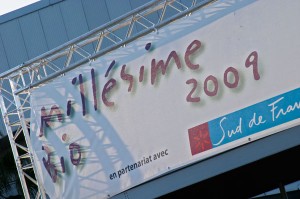 The world’s largest trade fair for organic wines was held in late January in Montpellier in the Languedoc for the 20th time. So, anniversary this year for Millésime Bio which began on a very small scale and now has around 700 exhibitors. During three days they present their wines to buyers, importers and journalists.
The world’s largest trade fair for organic wines was held in late January in Montpellier in the Languedoc for the 20th time. So, anniversary this year for Millésime Bio which began on a very small scale and now has around 700 exhibitors. During three days they present their wines to buyers, importers and journalists.
The atmosphere during the fair was optimistic despite an increase in the supply of organic wines and a demand that does not quite keep up with the supply, according to La Vigne.
Many organic winemakers sell their wines thanks to their good quality and not because they are organic. However, it is quite clear that with a growing supply of organically produced wines, it will get more and more difficult to use the cultivation method as the only selling point.
Affordable from South Africa? Higher wages for South Africa’s vineyard workers
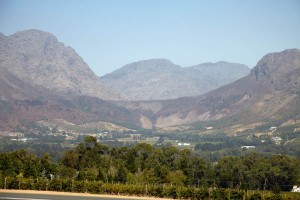 Strikes, sometimes violent, have hit South Africa’s vineyards and fruit farms since November. The workers have asked for strong wage increases which they also gotbeginning of February. The minimum wage is raised to 105 rand per day (about $12) from the previous 69 rand per day ($8). Employers fear, however, that the wage increase will bring layoffs and that South Africa will lose its competitiveness. (The new higher daily pay is similar to what a picker in France earns. Per hour.)
Strikes, sometimes violent, have hit South Africa’s vineyards and fruit farms since November. The workers have asked for strong wage increases which they also gotbeginning of February. The minimum wage is raised to 105 rand per day (about $12) from the previous 69 rand per day ($8). Employers fear, however, that the wage increase will bring layoffs and that South Africa will lose its competitiveness. (The new higher daily pay is similar to what a picker in France earns. Per hour.)
However, a report from the Bureau for Food and Agriculture Policy shows that 105 rand per day is not enough for the daily needs of a worker. Not even 150 rand per day (about $17), which was the original requirement of the strikers, would have been sufficient.
The working conditions of South Africa’s farm workers were highlighted in a report in 2011 by Human Rights Watch. The report talked about the violation of human rights and labour exploitation.
Perhaps this is something to keep in mind when one is tempted to buy that “very good value” not-expensive-at-all wine on the supermarket shelf? How much will the people who did all the hard work actually get when it is at rock-bottom price?
Planting rights, no thank you!
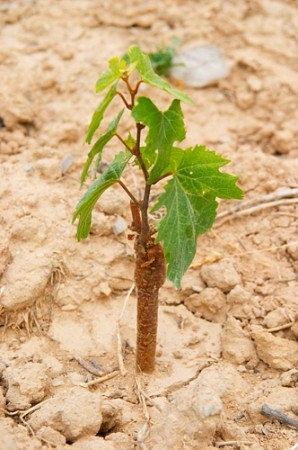 Quite some time back we wrote a guest article on the blog Les 5 du Vin on planting rights. They have moved the blog to a new platform and the article seems to have disappeared. So here it is again.
Quite some time back we wrote a guest article on the blog Les 5 du Vin on planting rights. They have moved the blog to a new platform and the article seems to have disappeared. So here it is again.
Our article on why the anachronistic and protectionist system with planting rights is a bad idea and why it leads to lower quality and more expensive wines for the wine consumers: Let’s talk business: Why Planting Rights is a bad idea.[divider_flat]
Wine events calendar
Send us an email if you have some event you want on the calendar.
Don’t be an egoist! Share with your friends and other wine enthusiasts! Forward the Brief to your friends! Suggest that they sign up for a free subscription !
© Copyright BKWine








